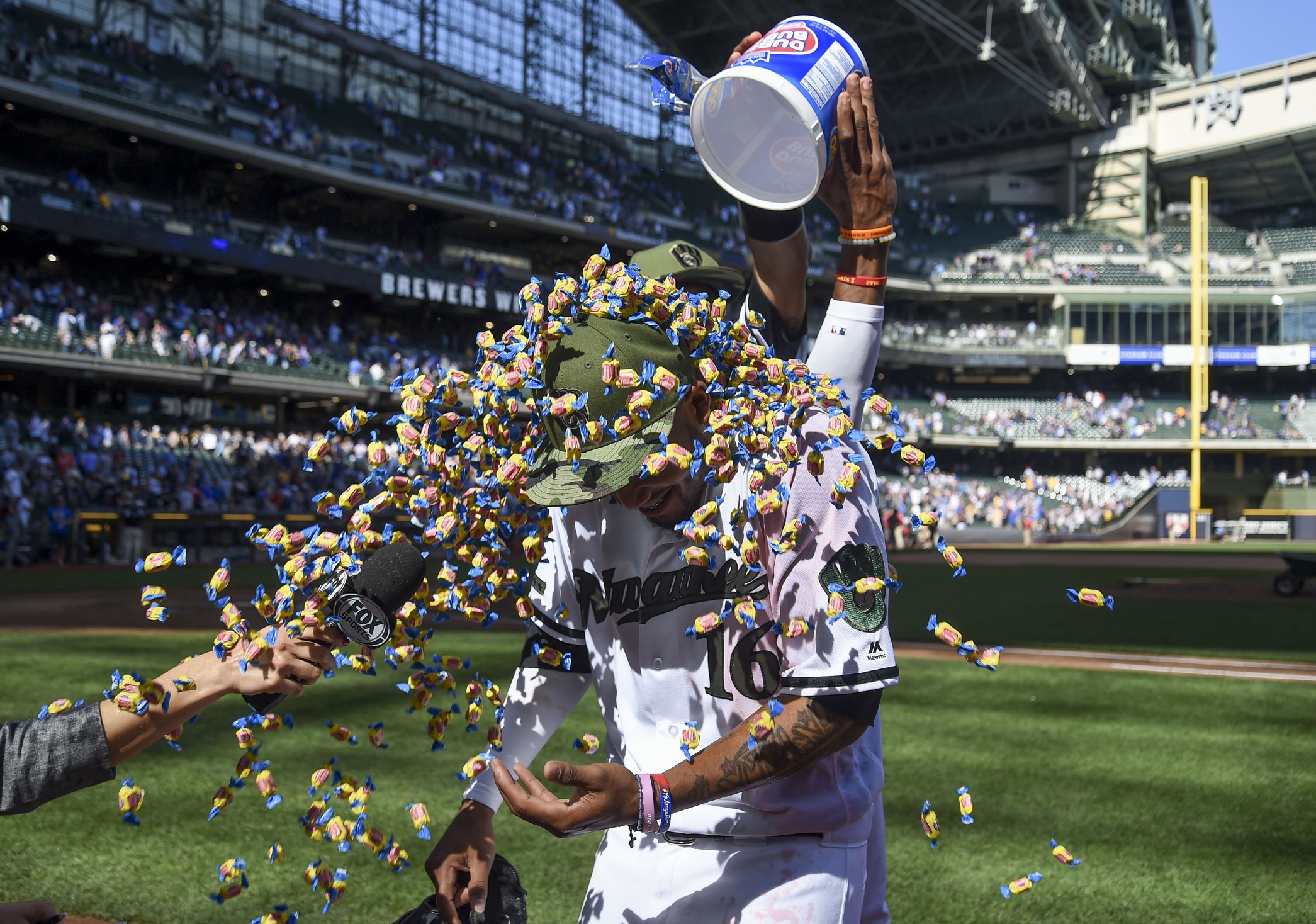Entering Memorial Day, the Brewers are playing true competitive (contending!) baseball; their basic Pythagorean W-L (based on Run Differential) has the club pegged for 87 wins, while park-adjusted metrics show the Brewers pushing the 90-win threshold with the bats 24 runs scored above average and the arms five runs better than average. A true average performance in the remaining games would place Milwaukee at approximately 84 wins. The statement that the pitching is remaining better than average was punctuated by Chase Anderson and Jimmy Nelson producing genius starts to close the series split against the Diamondbacks, and the bats showed that they can do what they do even with Eric Thames hobbled and Ryan Braun on the disabled list.
An Ode to Chumps
The Undeniable Average
The “small sample brigade” is burning on a short fuse, as this batch of 50 games comprises nearly one third of the season. Although, by counterpoint, the trade deadline remains more than 50 games away, which is to say that we’re simply halfway to figuring out if the Brewers can really find a way to bolster their shockingly good roster with some much needed help around the margins of the roster (high leverage relief, an extra starting pitcher, outfield defense (across the spectrum), catching depth, and 2B offensive production. I know what you’re thinking, but no, SS offense is not a concern; entering Sunday’s game, the club has a 97 split OPS+ at SS). Each of these needs could be met without emptying the farm system in trades, and more interestingly several of these moves could be met by trading current Brewers and recalling top prospects. Other organizational factors could also help the club improve (such as revisiting shifting strategies and defensive efficiency performance).
| Team (G) | Total Runs (Pace) | RS | RA | 2017 Record (Pace) | BP Projected (Preseason) |
|---|---|---|---|---|---|
| @Mets (4) | -7 (78W) | +34 | -41 | 21-28 (71) | 82 (88) |
| Dodgers (3) | +79 (106W) | +35 | +44 | 31-20 (98) | 98 (99) |
| Giants (4) | -61 (62W) | -51 | -10 | 22-30 (69) | 80 (86) |
| @Diamondbacks (3) | +57 (98W) | +2 | +54 | 31-21 (97) | 86 (78) |
| @Cardinals (4) | +3 (82W) | -11 | +14 | 24-23 (83) | 81 (76) |
| Pirates (4) | -32 (70W) | -30 | -2 | 23-28 (73) | 78 (81) |
| 22 of next 25 G | +39 (85W) | -21 | +60 | 152-150 (82) | 83 (84) |
Thankfully, Brewers fans will not need to wait another 50 games to crack this code. Their next 25 games feature 22 games against an unsightly mix of potential preseason contenders that are underperforming (Pirates, Giants, Mets), expected and unexpected elite clubs (Dodgers and Diamondbacks, respectively), and those godforsaken redbirds. A brief homestand against the Padres separates the Cardinals and Pirates series, but by that point in time 18 games will have been played in 18 days (including a doubleheader at St. Louis). Park-adjusted run differentials say that this group of opponents are underplaying their current records (on the whole), and the Giants and Mets are significantly underplaying their preseason PECOTA projections (not to mention underplaying their run differentials). Taking the math seriously suggests that this set of clubs might be ready to rebound; the funny thing about the Brewers is that their run differentials don’t lie, but their preseason PECOTA and current adjusted projected standings expect the club to fall back to .500.
As Jack Moore wrote on BPMilwaukee last week, these Brewers are essentially playing with house money: no one expected this group of players to win like this, especially not with underlying statistics that meet the wins-and-losses on the field. But we’re pushing beyond that during these next 25 games. This might be a set of games where we begin to believe, as the calendar creeps toward the middle of the season and we find that Milwaukee is effectively playing against elite clubs. They already rallied against Arizona this weekend, played an inspired homestand against Boston and the Mets, and even forced the Cubs to somehow misinterpret contemporary meteorological devices in postponing a game during a sunny Lakeview afternoon.
Essentially the Brewers are entering the true upsidedown: where perennial contenders like the Cardinals and Giants are thus far chasing Milwaukee, where previous rebuilders in Pittsburgh and New York are not capitalizing those efforts with winning campaigns, where the Brewers themselves are closing their rebuild with an emphatic statement about retooling a farm system without bottoming out on the MLB diamond (and no, a 73-win campaign that yields the ninth overall draft pick is not bottoming out). So the club can enter this upsidedown and continue to spin the league in unexpected directions. But this will arguably be the first real test for Milwaukee; so let the perennial bigshots take on these never-quit rag-taggers, who just may be poised to charge the contending years in unexpected ways.
